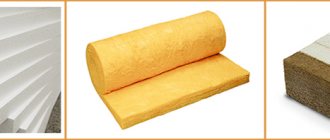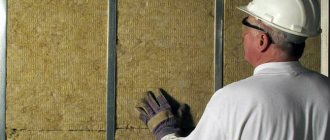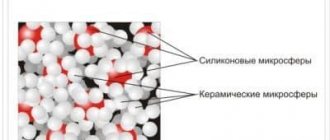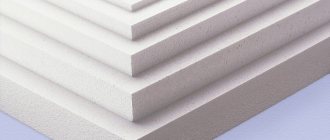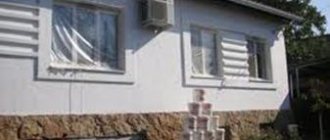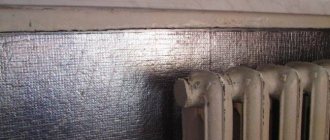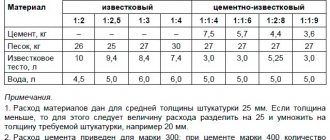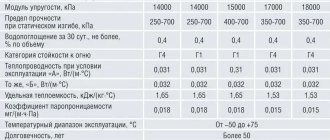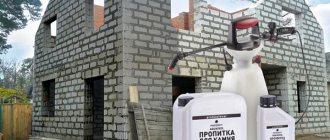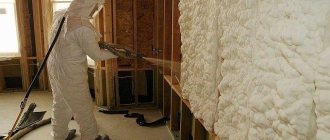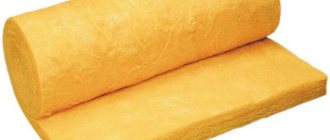What kind of material is this
The low-cost and fairly durable material is in great demand among consumers. Expanded polystyrene is a plastic polymer that is made by casting under high pressure and high temperatures (up to 230°C). To improve the quality of building materials, styrene and rubber are added to them.
Today, insulating country houses with these durable panels is gaining increasing popularity. The material is widely used for the production of building products - thermal insulation boards, formwork, cladding, ceiling tiles and many other products. Extruded polystyrene plaster T 15 from will have excellent performance properties and will last much longer. They cover the walls with it, then cover it with special solutions and decorate it.
Insulation with polyurethane foam
Previously, polyurethane foam was used exclusively for sealing cracks. Now they have found a more rational use for it. Insulation with foam:
- does not require additional fastenings;
- eliminates the use of hydro- and vapor barriers;
- lung;
- has a thermal conductivity coefficient from 0.019 to 0.035 W/m*C;
- low water absorption. It ranges from 1 to 3% of the volume per day. The introduction of castor oil into the composition reduces moisture absorption.
Regarding flammability, the material, depending on its composition, is divided into:
- self-extinguishing;
- fire-resistant;
- flame retardant.
Often, to achieve greater effect and reduce the cost of insulation, different polyurethane foam is used. This is especially true for rooms with wooden trim.
Possessing high adhesion, the material is perfectly fixed on any surface. If there are metal elements, they are covered in the same way. In this case, cold bridges are excluded.
The continuity and strength of the fabric prevents the occurrence and development of cracks. The material also keeps the house from shrinking. This is especially true for buildings above mines.
Why cover it?
Polystyrene facade plaster has a number of advantages for its further operation:
- improving the thermal insulation properties of the material;
- extending the service life of expanded polystyrene;
- reliable protection from ultraviolet exposure and moisture;
- leveling the surface for decorative finishing.
The difficulty of carrying out the work is associated with the very slippery and smooth surface of the material that will be covered with plaster. It is completely impermeable to liquid; after the finish dries, the material may crack. Do not despair - the right building material and sequence of actions will allow you to obtain a high-quality surface without flaws.
Cork insulation
Cork insulation is not just effective. The use of this material does not require additional finishing. The cork itself is beautiful. Natural or dark colors are used for wall decoration.
The cork covering is a fine mesh. It is formed by pressing raw materials followed by temperature treatment.
Cork thermal insulation of walls in an apartment is highly flexible and resilient. Even large tensile loads are not scary for him. The material returns to its original position without harm to its integrity.
The material does not support combustion and is classified as non-flammable. When smoldering, no substances hazardous to humans are released. This determines the prevalence of internal use. The thermal conductivity of the rolled cork is 0.0363 W/m2*C. It is more appropriate to use it in houses with walls made of porous materials. Otherwise, its insulating properties may not be enough.
Cork is installed as a finishing touch or as a base for wallpaper. Gluing is carried out using glue with increased adhesion. You need to be very precise when installing. The glue hardens quickly, threatening to glue the product crookedly.
For insulation, it is not the cork itself that is used, but a cork agglomerate. It is better to purchase fabric with antibacterial impregnation.
The top surface is varnished. It serves as protection against grease, household liquids and dirt.
How to plaster polystyrene correctly
Such types of material as extrusion, fire-resistant and regular foam are subject to mandatory processing. We’ll look at how to plaster polystyrene without breaking wood further.
Preparatory work
Manufacturers have long been offering special mixtures for finishing works of varying complexity. If you plan to carry out independent construction work, it is not recommended to purchase cheap low-quality materials. In addition, you will need a polystyrene mesh and special glue to attach it.
It is necessary to check the evenness of the surface - the heads of the nails and dowels are firmly immersed in the surface of the sheet. If you can’t hammer in the protruding part, you can carefully cut off a piece of the product using a construction knife. The gaps in the structure are filled with polyurethane foam or pieces of insulation. All protrusions and irregularities are smoothed out. On slopes you need to place special leveling corners.
After preparing the surface, you need to choose a day to apply putty plaster on polystyrene. It is best to carry out work in good dry weather, it is better if there is complete calm and the air temperature is between +5-35°C. The treatment is carried out immediately after installation of the foam boards.
What you will need
Carrying out calculations
You need to calculate the amount of materials needed to plaster polystyrene. For 1 square meter of slab it takes 5-6 kg of plaster, it may take more, so it’s better to buy the mixture with a reserve. More accurate calculations of building materials can be made in the store. Unused packaged goods can be returned to the store without any problems within two weeks upon presentation of proof of purchase.
How to choose the right materials
When you go to a hardware store with a list of what you need, listen to the seller’s advice. He will definitely select suitable materials. So, to process foam you will need:
- medium strength reinforcing mesh;
- special dry glue for plaster polystyrene;
- primer;
- plaster mixture;
- paint for application to the finished surface.
As for the choice of glue, preference for such work is given to such specimens as Coral, Polimin and Ceresit. If you choose the wrong adhesive consistency, you may end up with shedding and cracking of the coating in the near future.
You need to take a responsible approach to choosing a finishing mixture for polystyrene for plaster, which is used for exterior and interior decoration. Thus, mineral plaster perfectly resists external influences, such as heat, cold, precipitation and wind. It will last at least ten years, but is not very elastic and will gradually crack.
As for the acrylic mixture, it allows easy plastering and is highly elastic. Its disadvantage can be considered its rather high cost. But it will definitely pay off, because it will last much longer - more than 25 years. In addition, acrylic quickly absorbs dirt and gets dirty. It is impossible to remove such stains, so it is not recommended to use this coating outside a house located in a harsh climate with high rainfall.
Preparing the tool
In order to plaster polystyrene you will need:
- construction mixer or drill with a special attachment;
- stationery knife;
- wide spatula;
- sharp scissors;
- construction float;
- emery cloth;
Consumption of façade plaster on polystyrene foam
If styrofoam plastering is done with a universal facade mixture, then the consumption per square meter will be 10 kg. Using two types - adhesive and leveling plaster, prepare 4 and 6 kg per square, respectively. The same consumption - 9-10 kg will be if a polymer composition is used. Of these, 3.5-4 kg will be needed for gluing the insulation, the rest will be needed for plastering on foam plastic. An online calculator will help you calculate the consumption of leveling plaster.
Insulating a house with polystyrene foam is becoming more popular every year. Having familiarized yourself with how to plaster polystyrene foam, what materials are better to purchase for the facade, which façade insulation is preferable to room insulation, you can easily solve many problems that arise during repairs or construction. Plastered thermal insulation will last longer if it is promptly tinted and repaired if the integrity of the “shell” is damaged. Your home will be safer, and you will be warmer and more comfortable in it.
Step-by-step instruction
We plaster the polystyrene in several stages - at the initial stage you need to fix the mesh, and then move on to priming and final coating of the sheets. The peculiarity of surface treatment is that insulation applied in several layers will improve the properties of the material significantly.
Instructions for rough finishing
In order for the slippery material to be securely attached to the insulation, at the first stage a reinforcing mesh is glued to the wall. This layer will guarantee that the plaster layer will not fall off the surface in the future.
- To give the polystyrene surface roughness and unevenness, you need to use a sharp nail to mark the surface every 10 cm vertically. Transverse strokes can be horizontal or chaotic in nature.
- Prepare the surface as described above until completely leveled.
- Cut the reinforcing mesh into pieces, allowing for an overlap of at least 10 cm.
- Preparing a solution for gluing reinforcing mesh. To do this, you need to carefully study the manufacturer's instructions. According to reviews, the correct mixture should be a little thinner than recommended. Do several stirrings with a break of 5-10 minutes.
- Apply the mesh to the surface of the extruded polystyrene plaster and apply glue in two or three places. The hand holds the material from falling. Next, completely glue the canvas by applying glue with a spatula (layer width - 2-3 mm).
- Apply a second layer of glue to the surface and allow to dry completely for at least 24 hours.
The more accurately and evenly the reinforcing mesh is fastened, the less you will have to align them in the future. Therefore, it is important to straighten the material as evenly as possible until the glue completely hardens and carefully level it with a spatula.
Why plaster polystyrene foam?
Expanded polystyrene is a very durable material. Even after 80 cycles of freezing and thawing, it absolutely does not lose its performance characteristics, which means that such insulation can last for decades.
Despite its resistance to temperature changes, foam plastic is fragile. It is deformed from mechanical influences and does not tolerate direct solar radiation. If you want to choose such a material for insulating a building, it would be a good idea to plaster it. Thanks to this procedure, you will solve a number of problems:
1. Protect the insulating layer from mechanical damage. A durable layer of plaster will prevent the formation of dents, scratches, and cuts on the polystyrene foam.
2. Another useful thing about plastering polystyrene foam on the outside is that you can protect the walls from moisture and water. If the material is saturated with liquid, it will take a very long time to dry, during which time the walls themselves may become damp. Among other things, prolonged exposure to moisture spoils the insulation itself, causing it to deteriorate.
3.The plaster layer will protect the foam from direct sunlight. Under the influence of ultraviolet radiation, the material becomes more fragile and brittle.
4.Thanks to plaster, you will reduce the fire hazard of insulated walls.
